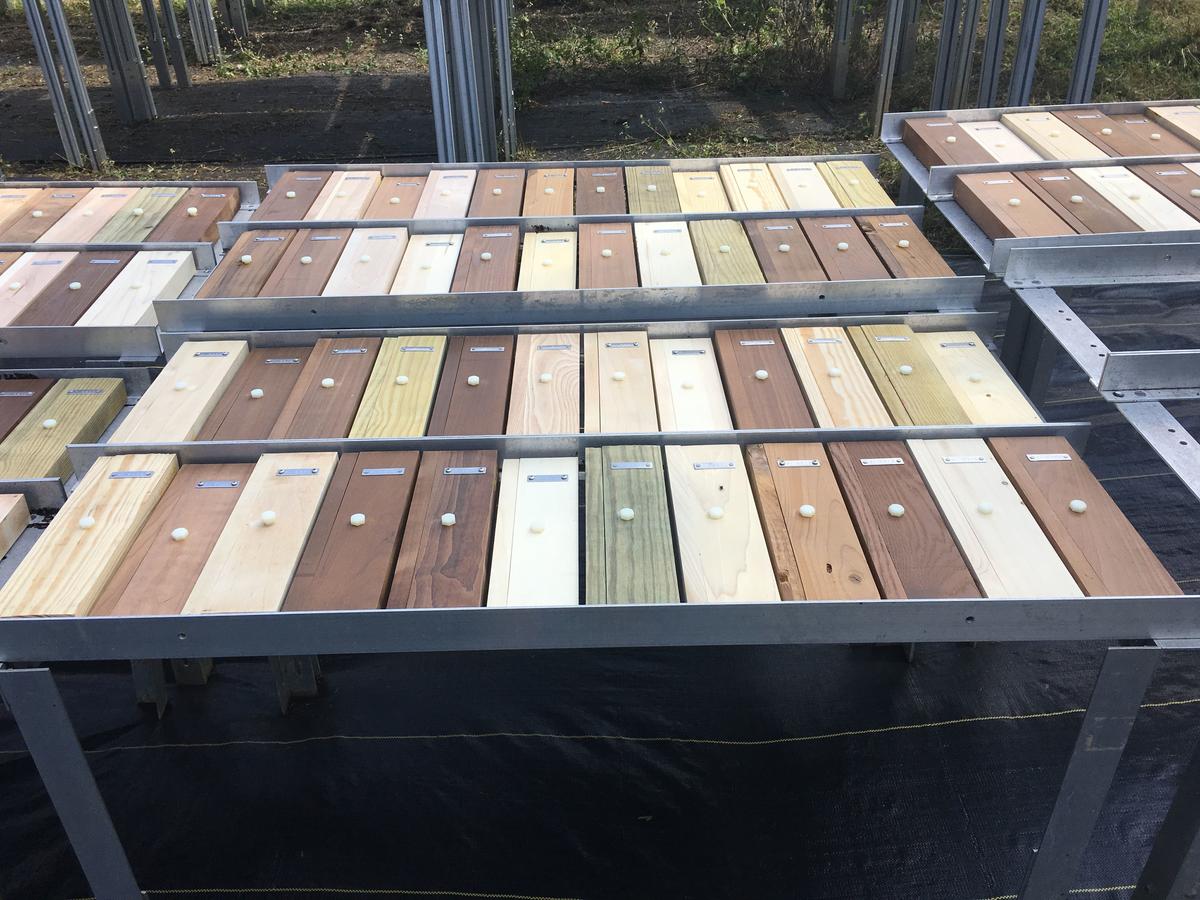Warm ocean breezes, dazzling sunlight and fragrant foliage make Hawaii a vacationer’s paradise. But the town of Hilo, on the east side of The Big Island, might be a bit too tropical. Hilo is hot, rainy and muggy. Temps often reach into the 90s Fahrenheit with humidity hovering around 80 percent. Average annual rainfall is 127 inches.
So while that combination might send people into air conditioned comfort, the extreme environment is very hard on exposed wood products. It warps. It rots. And that makes Hilo the perfect place to test thermally modified wood. If this “cooked” wood can stand up to extreme conditions, perhaps it will make a long-lasting, durable picnic table, or even a dock.
With funding from the U.S. Forest Service Wood Education and Resource Center, NRRI is testing wood from underutilized tree species – balsam fir, eastern hemlock, yellow poplar, aspen, red maple and white ash. The goal of the research is to make the performance data on these species of thermally modified wood publicly available to open up new markets.
“Balsam fir and eastern hemlock, especially, are considered problematic species because they often grow in high density stands or aren’t being harvested because the markets aren’t there,” said NRRI Scientist Matt Aro, project co-leader. “This can ultimately lead to reduced forest health and dangerous fire conditions.”
Michigan Technological University has renowned expertise – as well as the Hilo location – for this extreme testing. So with Michigan Tech on-site to gather data, NRRI shipped off wood thermally modified under two conditions, along with unaltered wood for comparison. The Hilo evaluations will take place over three years, simulating varying levels of outdoor exposure following American Wood Protection Association guidelines.
With one year of results just in, Aro is pretty excited about what he’s learning.
Minnesota’s low value wood species, thermally modified, resisted decay in the exposed elements as well as Southern pine treated with ACQ, or Alkaline Copper Quaternary, a chemical treatment with leaching potential.
“This is a big finding,” said Aro. “Thermal modification is a chemical-free process, so this is a pretty big deal.”
The hurdle to integrating thermally modified wood options into the wood products market in the U.S. is lack of data, as stated in a recent article in Hardwood Floors, the magazine of the National Wood Flooring Association.
According to the author Hal Mitchell: “Each species and thickness requires a unique treatment temperature and duration to achieve proper modification levels. Entry barriers, lengthy learning curves, and lack of production standardization have kept American production relatively low.”
The completed round of three years of exposure in Hilo will provide the physical performance data that Aro believes will bridge the knowledge gap for these plentiful tree species.
“NRRI is always looking for ways to increase the value obtained from our natural resources,” he said. “By providing this data to our wood products industry, we can open doors to opportunities for our underutilized wood species.”
